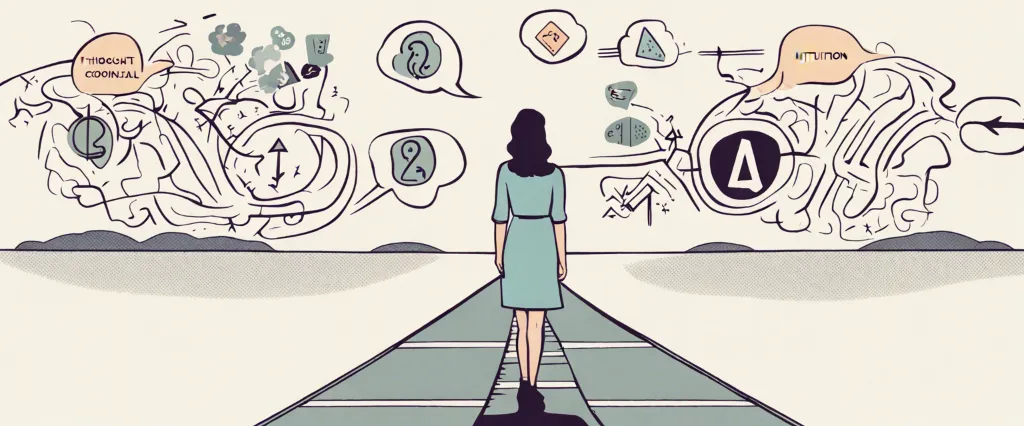In her groundbreaking book, The Dance of Intimacy, acclaimed psychologist Harriet Lerner explores the intricate dynamics of relationships and how they shape our lives. With her vast experience in counseling, teaching, and research, Lerner offers invaluable insights and tools to navigate the dance between self-assertion and connection. Through real-life stories and practical advice, she encourages readers to embrace vulnerability, communicate authentically, and create healthier, more fulfilling relationships. As a renowned author, therapist, and speaker, Harriet Lerner has dedicated her career to empowering individuals and couples to transform their lives and find emotional truth.
Chapter 1: Understanding the Dance of Intimacy
Chapter 1: Understanding the Dance of Intimacy of the book The Dance of Intimacy by Harriet Lerner explores the complexities and challenges individuals face in creating and maintaining intimate relationships. The chapter begins by emphasizing the importance of intimacy in our lives and the various ways it enhances our personal growth and emotional well-being.
Lerner describes how many people struggle with intimacy due to factors such as fear of rejection, loss of autonomy, and the challenge of balancing closeness and distance. She highlights how societal norms and gender roles also play a significant role in shaping individuals’ perceptions and expectations of intimacy.
The author introduces the concept of the “dance of intimacy,” illustrating that relationships are constantly evolving and changing. Lerner emphasizes that for a relationship to thrive, both partners must be willing to engage in this dance, recognizing their individual needs and how they intersect with their partner’s.
The chapter also explores common patterns that emerge in relationships, such as pursuing and distancing behaviors. Lerner explains the psychological reasons behind these patterns and how they can create cycles of conflict, distancing, and emotional disconnection. Through case examples, she illustrates the damaging effects of these patterns on individuals’ self-esteem and the overall health of the relationship.
Lerner stresses the importance of recognizing and addressing these patterns to foster greater emotional intimacy and connection. She emphasizes that it is crucial for individuals to take responsibility for their own part in the dance, rather than attributing all blame to their partner.
In summary, Chapter 1 of The Dance of Intimacy provides a foundation for understanding the complexities of intimate relationships. It highlights the challenges individuals face and the patterns that can hinder intimacy. By unraveling these patterns and taking ownership of their actions, individuals can create healthier and more fulfilling relationships.
Chapter 2: Exploring Patterns of Distance and Pursuit
Chapter 2 of “The Dance of Intimacy” by Harriet Lerner explores the patterns of distance and pursuit within intimate relationships. Lerner emphasizes that understanding these patterns is crucial for building more authentic, connected, and fulfilling relationships.
The chapter begins by introducing the concept of “cycles of distance and pursuit,” highlighting how relationships often involve a dynamic where one partner distances themselves while the other pursues more closeness. Lerner acknowledges that these roles can switch over time, but they tend to be deeply ingrained patterns within individuals.
She explains that people use various methods to create distance, such as withdrawal, silence, anger, or busyness. These behaviors may be rooted in fear, self-protection, past trauma, or a need for independence. On the other hand, pursuers may seek closeness through over-functioning, excessive caretaking, or constant questioning, driven by their fears of rejection or abandonment.
Lerner emphasizes the importance of recognizing and understanding these patterns in order to break free from them. She encourages individuals to become more aware of their habitual roles and to communicate openly with their partners about their needs and fears. By sharing vulnerabilities and exploring deeper emotions, both partners can work towards creating a more balanced and intimate relationship.
The chapter emphasizes that change requires a commitment from both partners to understand and support each other. Lerner suggests that rather than blaming or labeling each other, individuals should strive to empathize and foster mutual understanding. This requires patience, self-reflection, and a willingness to challenge the familiar patterns that have limited the relationship’s growth.
In summary, Chapter 2 of “The Dance of Intimacy” explores the patterns of distance and pursuit within relationships, highlighting the roles of partners who create distance and those who pursue closeness. Understanding these patterns is crucial in breaking free from them and building more balanced, authentic relationships.
Chapter 3: Communicating with Authenticity and Vulnerability
Chapter 3 of “The Dance of Intimacy” by Harriet Lerner explores the importance of communicating with authenticity and vulnerability in relationships. Lerner emphasizes that effective communication is the key to building and maintaining intimacy.
The chapter begins by highlighting the challenges we face in expressing our true feelings to others. It discusses societal norms that discourage vulnerability and authenticity, leading us to wear masks and hide our true selves. Lerner asserts that by doing so, we are hindering genuine connections and depriving ourselves of authentic relationships.
Lerner introduces the concept of “the stone wall” as a defense mechanism individuals often use when feeling vulnerable. This defensive behavior blocks the flow of communication and prevents true intimacy from developing. She encourages readers to acknowledge their own stone walls and work towards dismantling them.
The chapter outlines various strategies for effective communication. Lerner emphasizes the importance of using “I” statements to express personal experience and emotions. By taking ownership of our feelings, we allow the other person to understand our perspective and respond in a more empathetic manner.
Lerner also emphasizes the significance of non-verbal communication, such as body language and facial expressions, in conveying authenticity. She suggests paying attention to these subtle cues while also listening actively. Active listening involves giving one’s full attention, clarifying, and empathizing with the speaker.
Lastly, the chapter explores the role of honesty in building intimacy. Lerner emphasizes the importance of being true to oneself and expressing thoughts and feelings honestly, even if it may lead to discomfort or conflict. By doing so, individuals create a space for authenticity, vulnerability, and genuine connection.
In summary, Chapter 3 of “The Dance of Intimacy” focuses on the significance of communicating with authenticity and vulnerability. It encourages readers to break free from societal norms, acknowledge their defenses, and express themselves genuinely. The chapter offers practical strategies for effective communication, emphasizing the use of “I” statements, active listening, and honesty. Ultimately, it emphasizes that true intimacy can only be achieved through open and authentic communication.
Chapter 4: Navigating Power Dynamics in Relationships

Chapter 4: Navigating Power Dynamics in Relationships of the book “The Dance of Intimacy” by Harriet Lerner explores the concept of power dynamics within relationships and provides guidance on how to navigate them effectively. Lerner explains that power imbalances are inevitable in any relationship, whether it is between friends, partners, family members, or coworkers. However, the way individuals handle these imbalances can greatly impact the health and longevity of the relationship.
The chapter starts by discussing two common unhealthy power strategies: the “move-toward” and the “move-against” strategies. The “move-toward” strategy involves conforming and appeasing others to gain approval or avoid conflict, while the “move-against” strategy involves using aggression or dominance to establish control. Lerner emphasizes that both strategies are harmful and prevent authentic connection and intimacy.
The author then introduces the concept of a “move-away” strategy, which involves withdrawing and avoiding conflict altogether. While this strategy may seem non-threatening, it also hinders meaningful communication and resolution of issues.
Lerner suggests an alternative approach to power dynamics called the “move-towards-yourself” strategy. This strategy involves acknowledging and respecting one’s own needs, desires, and boundaries while also genuinely considering and empathizing with the needs and boundaries of the other person. By embracing this approach, individuals can establish healthy boundaries, communicate assertively, and negotiate compromises without power play or manipulation.
The author concludes the chapter by highlighting the importance of self-reflection and self-awareness in navigating power dynamics. Recognizing our own patterns and tendencies allows us to make conscious choices that empower ourselves and promote equality and mutual respect within our relationships. Ultimately, the chapter encourages readers to seek balance, authenticity, and assertiveness in their interactions to foster intimacy and connection.
Chapter 5: Healing from Past Wounds and Trauma
Chapter 5 of “The Dance of Intimacy” by Harriet Lerner focuses on the process of healing from past wounds and trauma in order to improve intimacy in relationships. Lerner emphasizes that these wounds can be emotional, psychological, or even rooted in childhood experiences, and they often hinder our ability to connect with others on a deeper level.
The chapter begins by discussing how many people carry unresolved pain from their past, which often resurfaces in their current relationships. Lerner emphasizes that healing is essential to break the cycle and create healthier patterns. To start this healing process, individuals must first acknowledge their wounds and recognize how they have impacted their lives.
The author introduces the concept of self-compassion as a necessary component of this healing journey. Self-compassion involves being kind and understanding towards oneself, letting go of self-blame, and allowing room for personal growth. Lerner outlines practical strategies for cultivating self-compassion, including practicing self-care, setting boundaries, seeking support from others, and reframing negative self-talk.
Furthermore, Lerner emphasizes the importance of forgiveness. Forgiveness is not about condoning the actions of others, but rather about releasing the emotional burden carried from past wounds. It is a process that involves acknowledging the pain, grieving the losses, and ultimately freeing oneself from the grip of resentment and anger.
The chapter concludes with a reminder that healing from past wounds and trauma is not a linear process but rather a journey that takes time and effort. Lerner invites readers to be patient and compassionate with themselves as they work towards breaking free from the patterns that hinder intimacy and create space for healthy and fulfilling connections with others.
Chapter 6: Building Trust and Emotional Safety
Chapter 6 of “The Dance of Intimacy” by Harriet Lerner focuses on the importance of building trust and emotional safety within relationships. Lerner discusses how trust is an essential foundation for any healthy partnership, and without it, individuals struggle to feel secure and comfortable within the relationship.
The chapter begins with Lerner explaining that trust involves relying on someone to consistently be there for emotional support, understanding, and security. However, building trust requires vulnerability and taking risks. Lerner emphasizes the need for honesty and openness in expressing one’s needs, desires, and fears to their partner, as this creates an environment of emotional safety.
Lerner emphasizes that building trust is a gradual process that requires time, patience, and active engagement from both partners. Trust is built through consistent actions and behaviors that demonstrate reliability, honesty, and respect. In addition, Lerner highlights the importance of establishing healthy boundaries within the relationship, as they contribute to a sense of safety and respect.
To foster emotional safety, Lerner suggests that partners focus on improving their communication skills. This involves active listening, validation of each other’s feelings and experiences, and avoiding defensive or dismissive responses. By practicing empathy and understanding, individuals can create a safe space for open and meaningful dialogue.
The chapter also explores the concept of betrayal and its impact on trust. Lerner acknowledges that betrayal can be difficult to overcome, but with effort and consistency, trust can be rebuilt. She provides guidance on how to navigate the healing process, emphasizing the need for remorse, accountability, and forgiveness.
In conclusion, Chapter 6 emphasizes that building trust and emotional safety is crucial for establishing and maintaining healthy and fulfilling relationships. By fostering open communication, setting boundaries, and addressing past betrayals, individuals can create a foundation of trust that allows for deeper intimacy and connection.
Chapter 7: Embracing Change and Growth in Relationships
Chapter 7 of “The Dance of Intimacy” by Harriet Lerner is titled “Embracing Change and Growth in Relationships”. In this chapter, Lerner explores the challenges that arise in relationships when individuals experience personal growth and change, and how these challenges can be navigated in a constructive manner.
Lerner begins by discussing the fear that accompanies change, as individuals often worry about the potential effects their growth might have on their relationships. She emphasizes the importance of accepting and valuing personal growth, even if it means stepping out of one’s comfort zone. Lerner argues that individuals should strive to bring their own best selves to the relationship in order to foster healthy growth and change.
The author also highlights the role of communication in navigating through relationship changes. She encourages open dialogue between partners, allowing each person to express their needs and expectations. Lerner emphasizes the need for both partners to listen and validate each other’s feelings and fears. By understanding and supporting each other, couples can explore new possibilities and move forward together.
Lerner goes on to address the challenges that arise when one partner experiences growth while the other resists it. She provides insight on how to handle such situations, suggesting patience, empathy, and encouraging open conversations to address the underlying fears and concerns.
Furthermore, Lerner emphasizes the significance of compromise and negotiation in a relationship. She explains that change and growth require both partners to make adjustments and find a balance between individual desires and the needs of the relationship. Through compromise, partners can avoid power struggles and work towards a healthier and more fulfilling connection.
In summary, Chapter 7 explores the essential process of embracing change and personal growth in relationships. Lerner highlights the importance of communication, understanding, and compromise in navigating through these changes. By valuing personal growth and understanding each other’s needs, couples can build stronger and more resilient relationships.

Chapter 8: Cultivating Intimacy and Connection
Chapter 8 of “The Dance of Intimacy” by Harriet Lerner focuses on the importance of cultivating intimacy and connection in relationships. Lerner begins by emphasizing the significance of personal growth in maintaining a healthy relationship. She highlights that our relationships can only be as healthy as we are and that self-awareness and self-improvement are key.
The chapter explores various factors that hinder intimacy and connection, including fear of vulnerability, fear of rejection, and fear of losing oneself. Lerner explains that these fears often arise from our past experiences and can cause us to withdraw or become defensive in our relationships. She argues that by acknowledging and addressing these fears, we can begin to cultivate deeper intimacy and connection.
Lerner introduces the concept of “differentiation,” which involves being able to maintain one’s individuality and connection simultaneously. She emphasizes the importance of finding a balance between autonomy and togetherness, where both partners can be themselves while still feeling connected and supported by one another.
To cultivate intimacy and connection, Lerner suggests several strategies. These include setting aside regular time for open and honest communication, actively expressing appreciation and gratitude, regularly engaging in shared activities, and nurturing both physical and emotional intimacy.
Lerner also encourages couples to work on understanding and respecting each other’s boundaries and needs. She emphasizes the importance of empathetically listening to one another and avoiding criticizing or lecturing. Lerner advises couples to create an environment of safety and trust where both partners feel comfortable expressing their true selves.
In summary, Chapter 8 of “The Dance of Intimacy” stresses the importance of personal growth, differentiation, and honest communication in cultivating intimacy and connection in relationships. By being aware of and addressing fears and insecurities, and by actively nurturing the relationship through open and respectful communication, couples can create a deeper sense of intimacy, trust, and connection.
After Reading
In “The Dance of Intimacy” by Harriet Lerner, the author explores the challenges and complexities that individuals face in their close relationships. Lerner emphasizes the importance of self-awareness, setting boundaries, and effectively communicating with others in order to develop healthy and thriving connections. Through relatable anecdotes and therapeutic insights, the book empowers readers to navigate the dance of intimacy with confidence, recognizing their own worth and reclaiming their power within relationships. With its practical advice and gentle guidance, “The Dance of Intimacy” equips individuals with the tools necessary to create and maintain meaningful connections, ultimately leading to personal growth and fulfillment.
1. The Five Love Languages” by Gary Chapman: This book explores the different ways people give and receive love, helping readers understand the needs and preferences of their loved ones. It offers practical advice on how to improve relationships through effective communication and understanding.
2. “Attached: The New Science of Adult Attachment” by Amir Levine and Rachel S.F. Heller: This book delves into the science behind attachment theory and how it shapes our relationships. It helps readers understand their attachment style and how it influences their interactions with romantic partners, offering tools to build more secure and fulfilling relationships.
3. The Art of Asking” by Amanda Palmer: Drawing from her own experiences as a musician, Palmer explores the power of vulnerability, trust, and communication in building strong connections with others. This book encourages readers to embrace empathy, authenticity, and asking for help, ultimately fostering deeper connections with loved ones and communities.
4. “Mating in Captivity: Unlocking Erotic Intelligence” by Esther Perel: In this thought-provoking book, Perel examines the paradox between intimacy and desire in long-term relationships. Through case studies and personal stories, she challenges traditional beliefs about love, sex, and marriage, providing insights on fostering a passionate and emotionally fulfilling partnership.
5. “Hold Me Tight: Seven Conversations for a Lifetime of Love” by Sue Johnson: Based on emotionally focused therapy (EFT), this book offers a practical framework to strengthen and deepen relationships. Johnson explores seven transformative conversations that help couples understand and address their underlying emotional needs, ultimately enhancing their emotional and physical intimacy.




